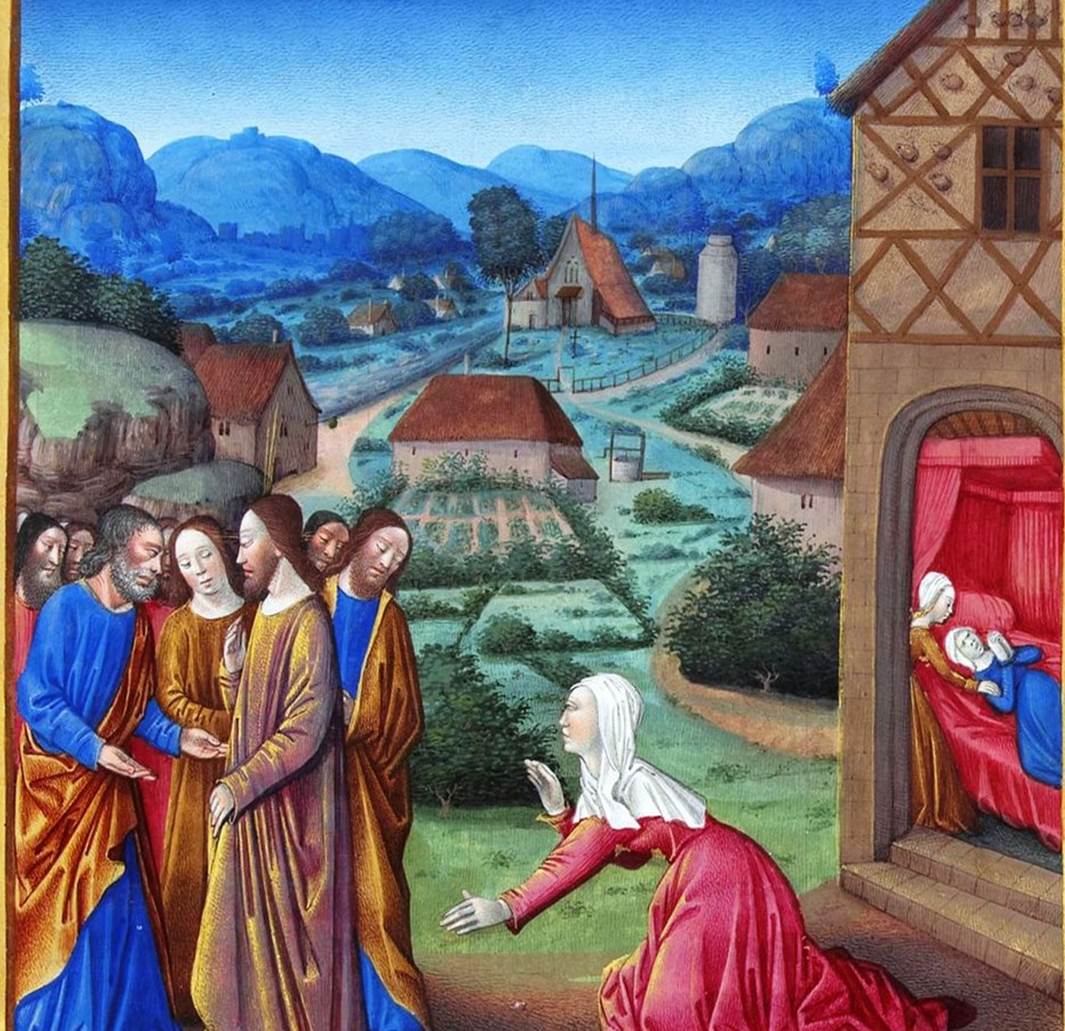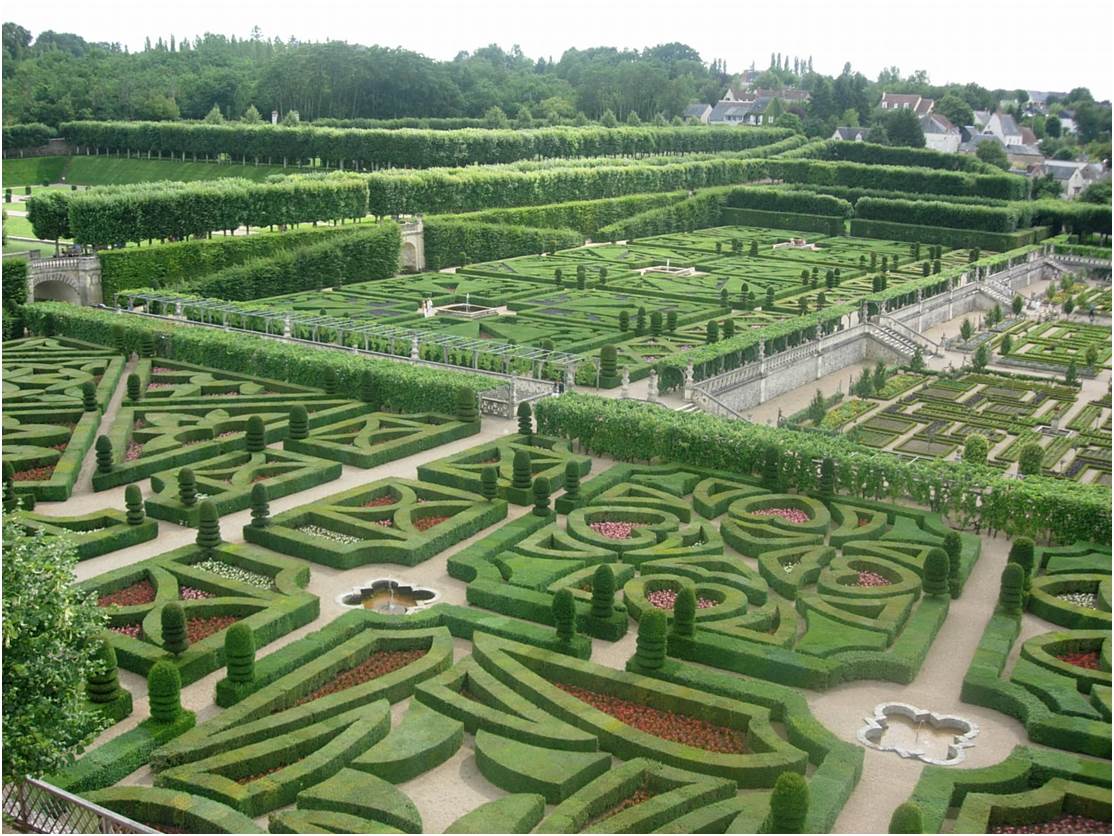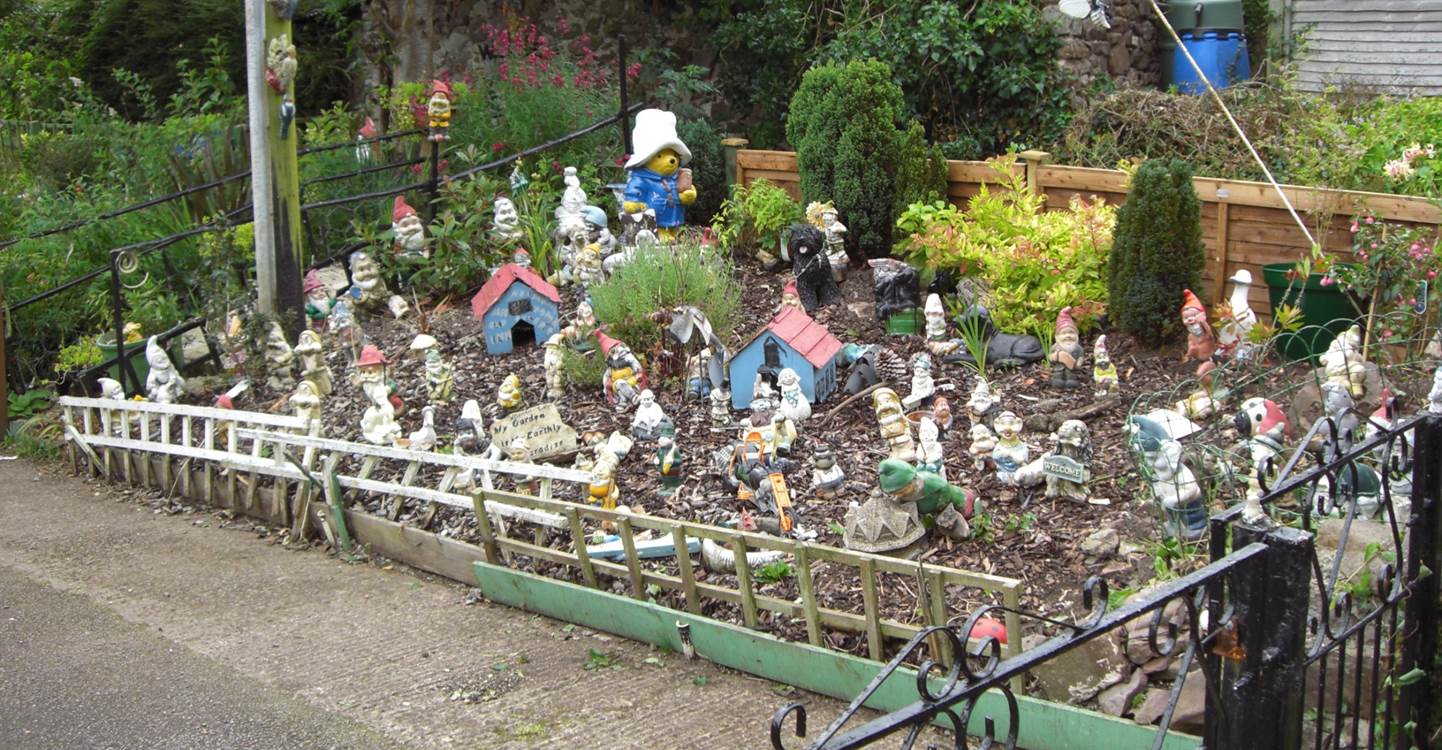- Home
- Garden Science
- History of gardens and wildlife
- Home
- Garden Science
- History of gardens and wildlife
History of gardens and wildlife
This is a large and interesting topic, and we will be adding to this page in the future. Understanding how gardens
arose from their roots in prehistory helps us appreciate the early parallel between gardening and farming, the origins of many of our favourite wildflowers, and the great antiquity of the garden habitat, which is at least as old as any of our classic conserved "semi-natural" habitats like chalk grassland and coppice woodland.
What is a garden?
In his 1755 Dictionary, Dr Samuel Johnson defined a garden as: “A piece of ground, enclosed, and cultivated with
extraordinary care, planted with herbs or fruit or food, or laid out for pleasure”. We can’t do better today.
The key word is “enclosed” - gardens have always been patches of land set aside from the rest of the town or
country, to protect and nurture the specially managed plants and animals within.
The word “garden” comes from the proto-Indo-European word “Ghordos” - meaning an enclosure, which has given us the modern English words horticulture, court, orchard, garth, yard and garden. The ancient Persian words “Pairi
daeza” meaning “around-wall” or “enclosure” gave the name “Paraedisos” used by Greek translators to describe the Garden of Eden, which has given us the words "paradise" (for heaven) and "park".
What is a garden for?
The two prime purposes of gardening are production of food (and medicinal herbs), and for aesthetic pleasure.
The earliest gardens (which were also the earliest arable fields) were devoted to food production. Most of the
ornamental plants we know now were unavailable to Neolithic and Bronze Age people, and fertile ground was too
precious to waste on frivolity.
The first truly ornamental gardens we know of were remarkably early, in ancient Egypt and Greece, and they
belonged to rich and powerful people who could afford to pay gardeners, and to set aside good land for
non-productive uses. All the evidence suggests that the prime motivation for most of these gardens, as with the
houses they adjoined, was to impress.
Through most of history, we know practically nothing of the modest, productive gardens of ordinary people, although by the Middle Ages archaeological and documentary evidence begins to give some clues. If you look at any book on garden history, you will find it almost exclusively dominated by the gardens of the wealthy, because these were painted, written about, and often survived to the present.
The garden of the Chateau de Villandry in the Loire near Tours in France is a twentieth century reconstruction of a Renaissance parterre garden, originally almost entirely intended to impress one's guests.


Modern British gardening is a vastly more equal and democratic activity than in the past. For a start, over 80% of households now have a garden, and more than two thirds of homes are owned by their occupiers, so they have free choice in how to garden. Even in recession, people have more money to spend on gardening than in the past, and the hobby has become very trendy and popular.
Modern gardens have to serve a lot of functions in addition to the roles of production and showing off that characterise gardens in history. Here is a group of functions suggested during a design workshop:
Productive Space
Vegetables – allotment, water butts, raised beds
Fruit – Soft fruit, hard fruit, trees, bushes, vines, fruit cage
Animals – bees, chickens, rabbits
Status Space
Show off space – "Chelsea features", chiminea, luxuries
Add value – raise the house price (or avoid lowering)
Macho values – stripy lawn, massive barbie
Functional Space
Utility - shed, workshop, car park, dustbins, bikes, pet relief
Playground - lawn, climbing frame, sandpit, swings, pool
Outdoor room - Patio, seating, table, lighting, shelter
Emptying the dog
Personal Space
A wonderful creation/design of your own
Hobbies – collecting plants, topiary, pruning, gnomes
“Keeps me busy” – weeding, mowing, tidying
Escape route – smoking area, shed for men to hide in
Relaxation - hammock , barbecue, gin and tonic
“Natural” Space
Wildlife – bird-watching, feeding, pollinators, frogspawn
Seasons – keeping grounded in reality
Natural sensations – wind, heat cold, sounds, smells
While the Wildlife Gardening Forum would like everyone to appreciate gardens for their natural space and wildlife, we have to acknowledge that there are very many competing roles!

There are no rules in modern gardening, and if this is what you want - go for it!
The origins of gardening in Britain
Gardens - as places for food production, started with the Neolithic revolution, which reached Britain about 4,000 BC, bringing crops and techniques which originated some 4,200 years earlier in the Near East.
The earliest farmers worked at the garden scale in tiny fields, many less than half an acre, cultivated by hand,
scratching with hoes or digging sticks before the availability of hand or ox ploughs in the later Neolithic and Bronze Age.
Early crops
Neolithic people brought in crop plants like emmer wheat, naked wheat and barley, but also foraged for fruits like crab apple, blackberry, sloe, hazel and hawthorn. The common weed Chenopodium album (fat hen) was another foraged or possibly garden-scale cultivated food plant used for its seeds or as spinach.
Starting with the Neolithic, and progressing through into the Bronze and Iron Ages, other plants arrived as hitchhikers with the early farmers. The most interesting group was the “arable weeds” - annual plants adapted to cultivation, originating, with agriculture, in the Near East, and hitch-hiking west with the spreads of farming.
These include some popular and familiar wildflowers, such as common poppy, corncockle and cornflower. Today, with the clean fields of intensive cereal farming, many of these plants are now very rare and actively conserved.
By the late Iron Age, many more new plants had been introduced, including asparagus, dill, beans, fennel, peas,
prunes and lentil, and it is likely that some native plants had become cultivated and perhaps “improved” by selection. Even so, the sophistication of gardening in Britain in pre-history was very low compared with that of the Greeks and Egyptians.
You can read a more extensive summary of the earliest gardening in our leaflet "Prehistory of Gardens and Biodiversity in Britain"
Later history of gardening
Through the Iron age and Roman periods the British population rose to somewhere between 2.75 and 4.0 million
people. The Romans transformed the landscape of Britain, by extensive field drainage, the development of towns,
cities and a good road network. The system of rural farms growing produce for sale to urban dwellers developed,
allowing people to specialise their labour and develop trades. As international contacts increased, more and more
foreign plants found their way to British gardens, especially after about 1500, with the opening up of the New World. The graph below is based on data in "The Origin of Plants" by Maggie Campbell-Culver, but this only covers plants for which a reasonably definite date can be ascribed, by today the number of garden plant species and selected varieties exceeds 50,000.
Post-Medieval gardening for the rich has been a helter-skelter ride of styles, through formal classicism, to baroque,
rococo and the grotesque, to landscape level gardening and the Edwardian elegance of Lutyens and Jekyll, and cottage
gardens matched by modern brutalism. Again, the most influential gardens have been those of the rich, but modern
media exposure shows just how inventive ordinary domestic gardeners have become.
In the last few decades, concerns about invasive garden escapee plants have brought some gardening practice into question, but there is no doubt gardens in Britain are hugely supportive for wildlife, and equally good for people
Wildlife Gardening Forum leaflet available from this page:
Page written by Steve Head Reviewed by Jennifer Kent

Post-Medieval gardening for the rich has been a helter-skelter ride of styles, through formal classicism, to baroque, rococo and the grotesque, to landscape level gardening and the Edwardian elegance of Lutyens and Jekyll and cottage gardens matched by modern brutalism. Again, the most influential gardens have been those of the rich, but modern media exposure shows just how inventive ordinary domestic gardeners have become.
In the last few decades, concerns about invasive garden escapee plants plants have brought some gardening practice into question, but there is no doubt gardens in Britain are hugely supportive for wildlife, and equally good for people
Wildlife Gardening Forum leaflet available from this page:
By Steve Head Reviewed by Jennifer Kent
The origins of gardening in Britain
Gardens - as places for food production, started with the Neolithic revolution, which reached Britain about 4,000 BC, bringing crops and techniques which originated some 4,200 years earlier in the Near East.
The earliest farmers worked at the garden scale in tiny fields, many less than half an acre, cultivated by hand,
scratching with hoes or digging sticks before the availability of hand or ox ploughs in the later Neolithic and Bronze Age.
Early crops
Neolithic people brought in crop plants like emmer wheat, naked wheat and barley, but also foraged for fruits like crab apple, blackberry, sloe, hazel and hawthorn. The common weed Chenopodium album (fat hen) was another foraged or possibly garden-scale cultivated food plant used for its seeds or as spinach.
Starting with the Neolithic, and progressing through into the Bronze and Iron Ages, other plants arrived as hitchhikers with the early farmers. The most interesting group was the “arable weeds” - annual plants adapted to cultivation, originating, with agriculture, in the Near East, and hitch-hiking west with the spreads of farming.
These include some popular and familiar wildflowers, such as common poppy, corncockle and cornflower. Today, with the clean fields of intensive cereal farming, many of these plants are now very rare and actively conserved.
By the late Iron Age, many more new plants had been introduced, including asparagus, dill, beans, fennel, peas, prunes and lentil, and it is likely that some native plants had become cultivated and perhaps “improved” by selection. Even so, the sophistication of gardening in Britain in pre-history was very low compared with that of the Greeks and Egyptians.
You can read a more extensive summary of the earliest gardening in our leaflet "Prehistory of Gardens and Biodiversity in Britain"
Later history of gardening
Through the Iron age and Roman periods the British population rose to somewhere between 2.75 and 4.0 million people. The Romans transformed the landscape of Britain, by extensive field drainage, the development of towns, cities and a good road network. The system of rural farms growing produce for sale to urban dwellers developed, allowing people to specialise their labour and develop trades. As international contacts increased, more and more foreign plants found their way to British gardens, especially after about 1500, with the opening up of the New World.


Modern British gardening is a vastly more equal and democratic activity than in the past. For a start, over 80% of households now have a garden, and more than two thirds of homes are owned by their occupiers, so they have free choice in how to garden. Even in recession, people have more money to spend on gardening than in the past, and the hobby has become very trendy and popular.
Modern gardens have to serve a lot of functions in addition to the roles of production and showing off that characterise gardens in history. Here is a group of functions suggested during a design workshop:
Productive Space
Vegetables – allotment, water butts, raised beds
Fruit – Soft fruit, hard fruit, trees, bushes, vines, fruit cage
Animals – bees, chickens, rabbits
Status Space
Show off space – "Chelsea features", chiminea, luxuries
Add value – raise the house price (or avoid lowering)
Macho values – stripy lawn, massive barbie
Functional Space
Utility - shed, workshop, car park, dustbins, bikes, pet relief
Playground - lawn, climbing frame, sandpit, swings, pool
Outdoor room - Patio, seating, table, lighting, shelter
Emptying the dog
Personal Space
A wonderful creation/design of your own
Hobbies – collecting plants, topiary, pruning, gnomes
“Keeps me busy” – weeding, mowing, tidying
Escape route – smoking area, shed for men to hide in
Relaxation - hammock , barbecue, gin and tonic
“Natural” Space
Wildlife – bird-watching, feeding, pollinators, frogspawn
Seasons – keeping grounded in reality
Natural sensations – wind, heat cold, sounds, smells
While the Wildlife Gardening Forum would like everyone to appreciate gardens for their natural space and wildlife, we have to acknowledge that there are very many competing roles!

The garden of the Chateau de Villandry in the Loire near Tours in France is a twentieth century reconstruction of a Renaissance parterre garden, originally almost entirely intended to impress one's guests.
A rare glimpse of a peasant's garden in the background of 'The Canaanite Woman' from the Très Riches Heures du Duc de Berry, about 1412.
A rare glimpse of a peasant's garden in the background of 'The Canaanite Woman' from the Très Riches Heures du Duc de Berry, about 1412.
History of gardens and wildlife
This is a large and interesting topic, and we will be adding to this page in the future. Understanding how gardens arose from their roots in prehistory helps us appreciate the early parallel between gardening and farming, the origins of many of our favourite wildflowers, and the great antiquity of the garden habitat, which is at least as old as any of our classic conserved "semi-natural" habitats like chalk grassland and coppice woodland.
What is a garden?
In his 1755 Dictionary, Dr Samuel Johnson defined a garden as: “A piece of ground, enclosed, and cultivated with extraordinary care, planted with herbs or fruit or food, or laid out for pleasure”. We can’t do better today.
The key word is “enclosed” - gardens have always been patches of land set aside from the rest of the town or country, to protect and nurture the specially managed plants and animals within.
The word “garden” comes from the proto-Indo-European word “Ghordos” - meaning an enclosure, which has given us the modern English words horticulture, court, orchard, garth, yard and garden. The ancient Persian words “Pairidaeza” meaning “around-wall” or “enclosure” gave the name “Paraedisos” used by Greek translators to describe the Garden of Eden, which has given us the words "paradise" (for heaven) and "park".
What is a garden for?
The two prime purposes of gardening are production of food (and medicinal herbs), and for aesthetic pleasure.
The earliest gardens (which were also the earliest arable fields) were devoted to food production. Most of the ornamental plants we know now were unavailable to Neolithic and Bronze Age people, and fertile ground was too precious to waste on frivolity.
The first truly ornamental gardens we know of were remarkably early, in ancient Egypt and Greece, and they belonged to rich and powerful people who could afford to pay gardeners, and to set aside good land for non-productive uses. All the evidence suggests that the prime motivation for most of these gardens, as with the houses they adjoined, was to impress.
Through most of history, we know practically nothing of the modest, productive gardens of ordinary people, although by the Middle Ages archaeological and documentary evidence begins to give some clues. If you look at any book on garden history, you will find it almost exclusively dominated by the gardens of the wealthy, because these were painted, written about, and often survived to the present.














